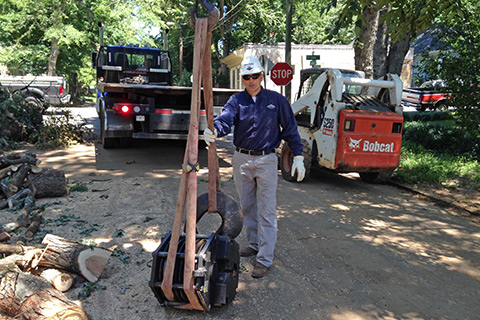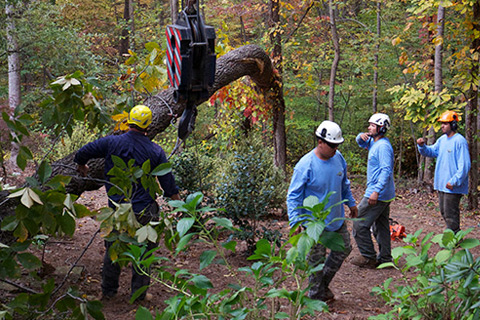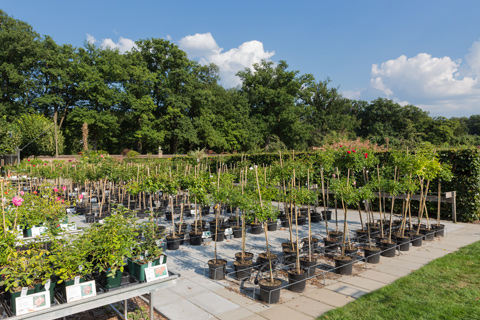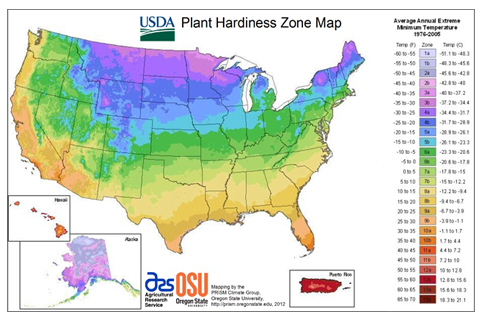Notice: Undefined variable: page in /home/vrxdg1855sn3/public_html/wp-content/themes/72tree/content.php on line 15
Notice: Trying to get property 'ID' of non-object in /home/vrxdg1855sn3/public_html/wp-content/themes/72tree/content.php on line 15
What Is an ISA Certified Arborist?

If you have trees in your landscape, you should already know the immense value they can bring to your property. More-so, you should be aware of the danger they may pose if left uncared for. Keeping your trees healthy, well pruned, and vibrant works to create a diverse landscape ecosystem while boosting your home’s curb appeal.
The Role of an Arborist in Your Tree Care
When in the planning stages or the implementation phase of your landscape, consulting an ISA Certified Arborist will keep you from making potentially costly mistakes. Some trees should never be planted near structures, while others (with invasive root systems) should not be located near water supply lines, driveways or asphalt.
As your landscape grows and ages, the role of a Certified Arborist is to help you maintain your trees properly pruned, trimmed, and more importantly – healthy. When those trees are compromised by disease, pest infestations or severe weather, it is a properly trained and equipped arborist who can determine the best course for its removal.
Watch how our Roswell Ga arborist (https://georgiaarborist.org/Sys/PublicProfile/246617/62524) coordinates the removal of a high-risk tree using a 275 ton crane:
What is an Arborist?
Simply put, an arborist is a tree care professional. They are trained and have invested significant time in the study of planting, caring for, treating, removing, and overall maintenance of trees, either individually or in an ecosystem.
What is an ISA Certified Arborist?
For nearly a century, the International Society of Arboriculture (ISA) has been a fundamental part in both the science and education within the tree care industry.
To become an ISA Certified Arborist, an individual must reach a level of knowledge and practice in the art and science of tree care. To carry the title “certified”, a comprehensive exam (created and developed by leading tree care experts) must be passed. It cannot go without mentioning that this process and certification are completely voluntary.

It doesn’t stop there. In order to maintain certification, Certified Arborists must follow a strict code of ethics and continue their education. Due to this aspect alone, when you call on a Certified Arborist, more-than-likely, the individual will possess the most current knowledge and practice available in the tree care industry.
NOTE: ISA Certification can attest to the knowledge of a tree care professional. It does not measure the standards nor the quality of service or performance.
The Hiring of a Tree Care Professional
All ethical Certified Arborists will agree that the decision to hire a tree professional should not be taken lightly. It is important to do the research and “know” who you are contracting to manage your tree issues. All ISA certified arborist are listed here: http://www.treesaregood.org/findanarborist/findanarborist
Look for reviews, ask for references, check out current or past projects to see (first hand) the quality of their work. It cannot be overstated, the necessity to be comfortable with the services provided by your tree professional, as that relationship may be ongoing for many years.
72tree.com staffs a master arborist to help Roswell residents with tree removal, cutting, disease, or assessment services. We look forward to assisting you and preserving the health of your trees and plants.

 These tree buying tips will assist you in the purchasing of a healthy tree. Keep in mind that proper tree care starts when you select a tree, making the right selection will affect its shape, strength, and even its life span.
These tree buying tips will assist you in the purchasing of a healthy tree. Keep in mind that proper tree care starts when you select a tree, making the right selection will affect its shape, strength, and even its life span.
